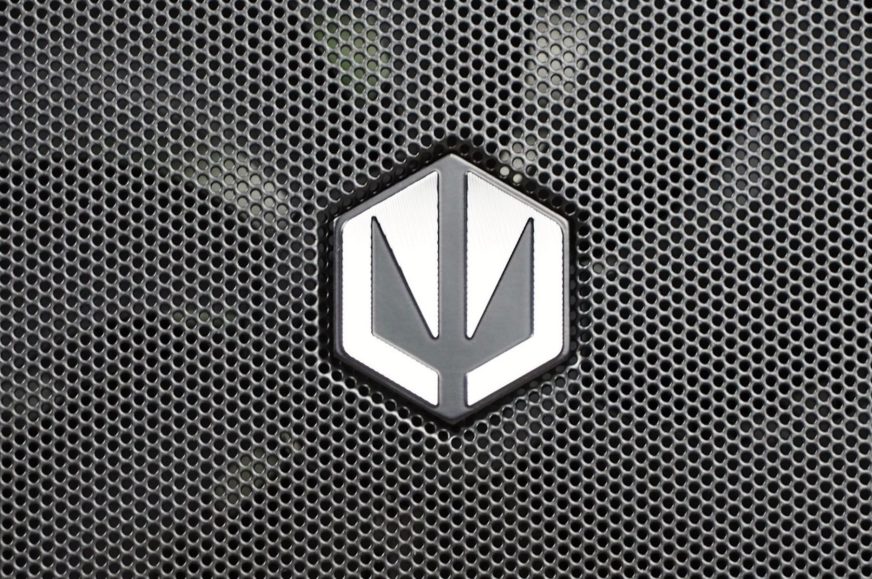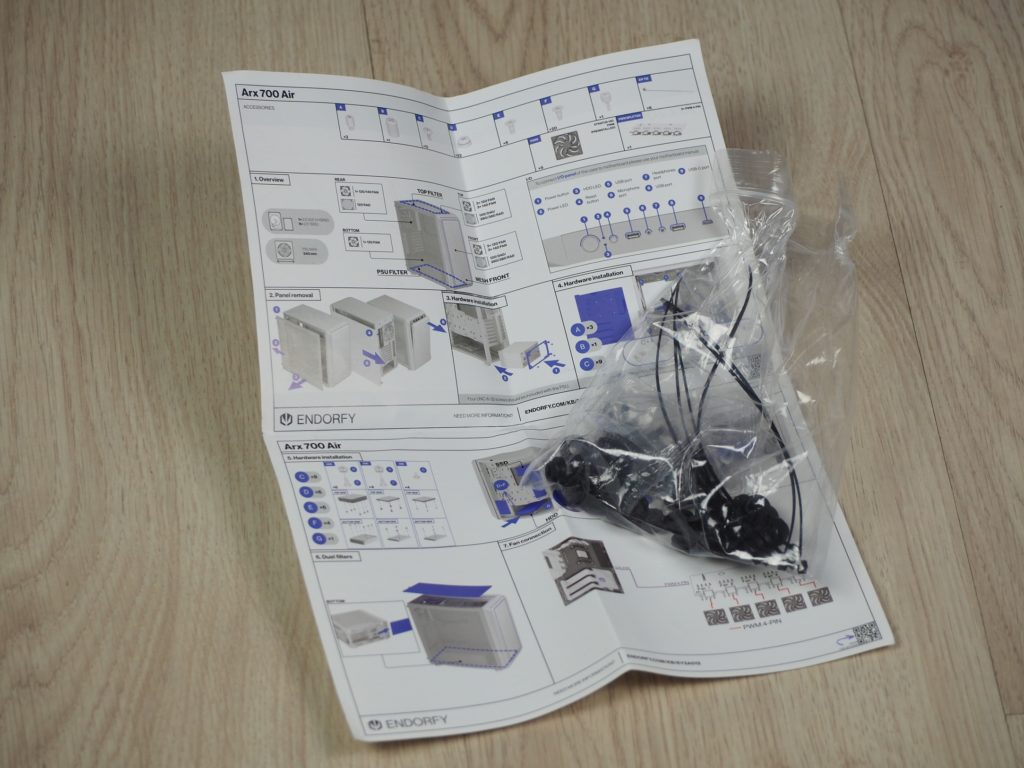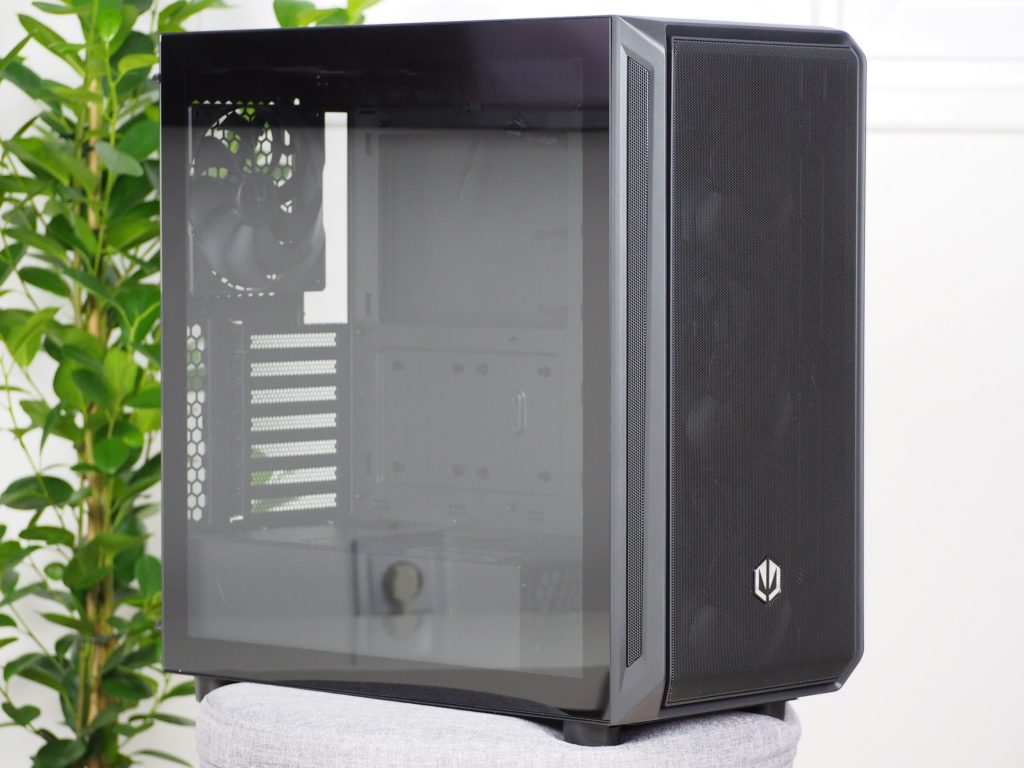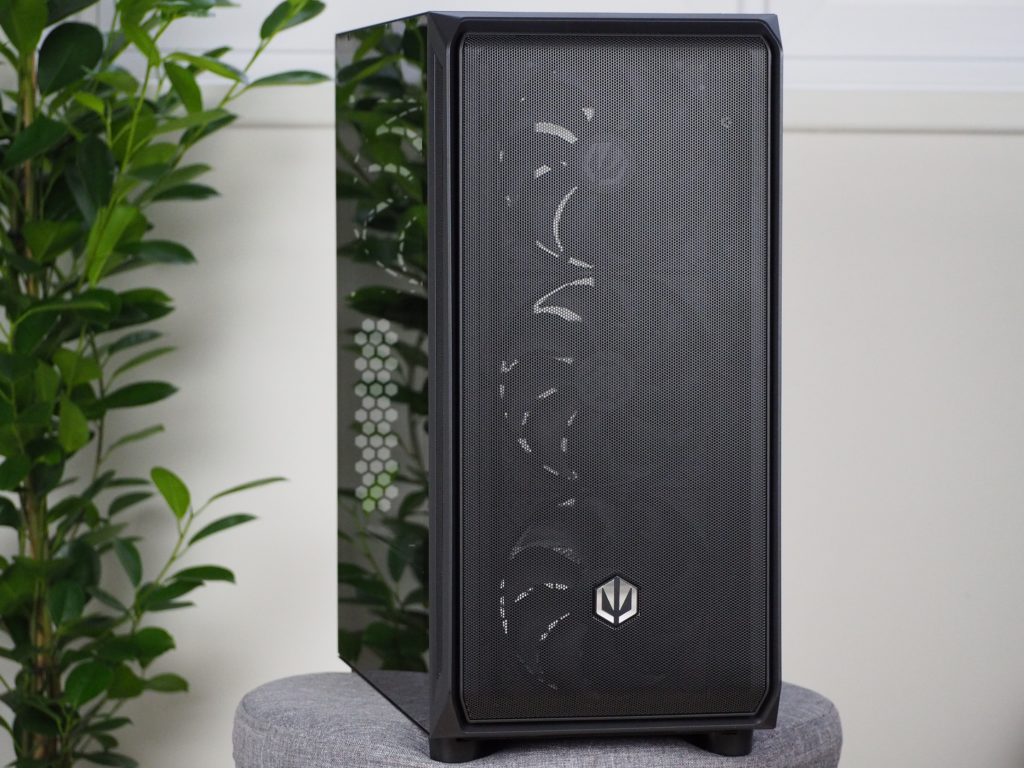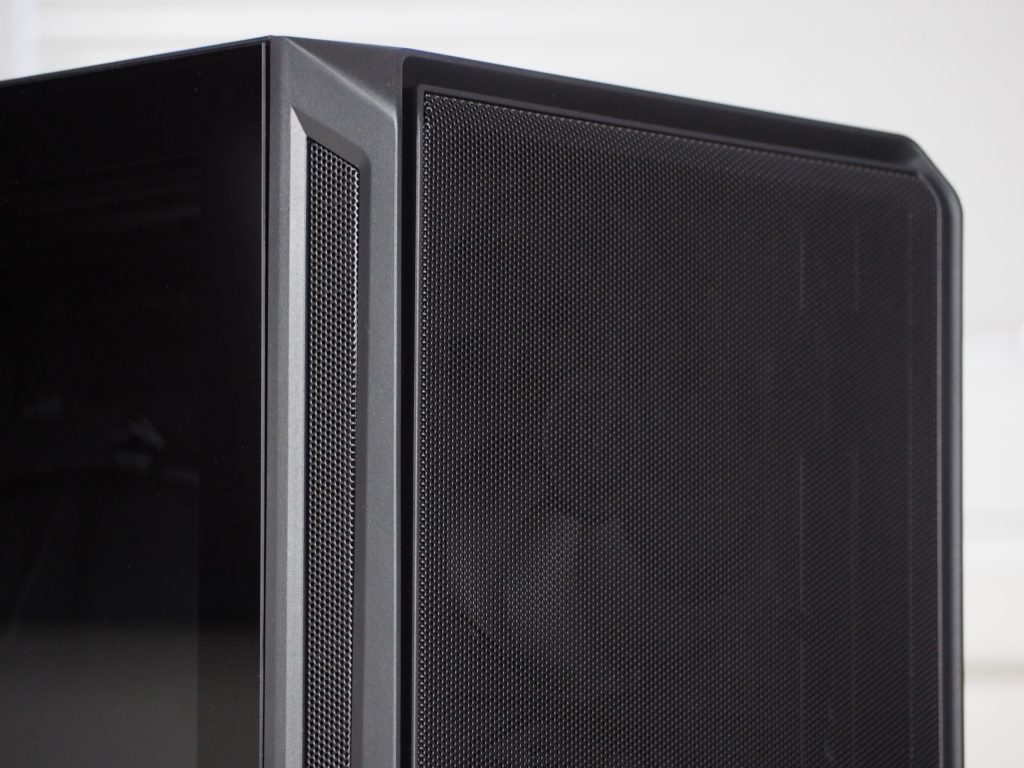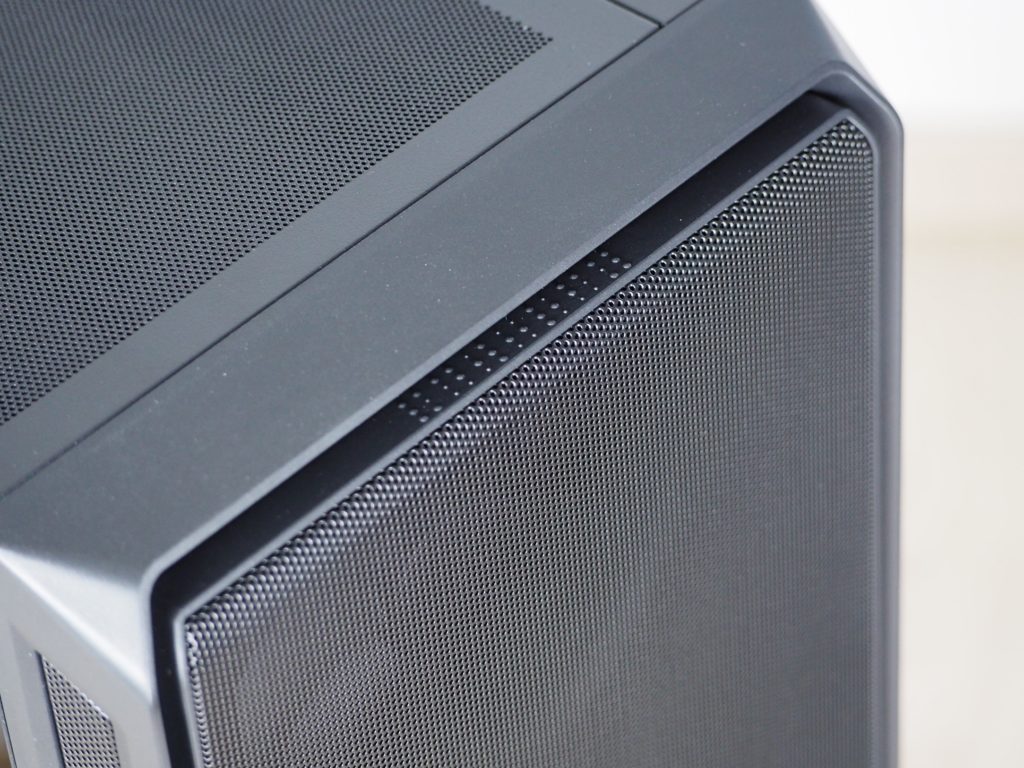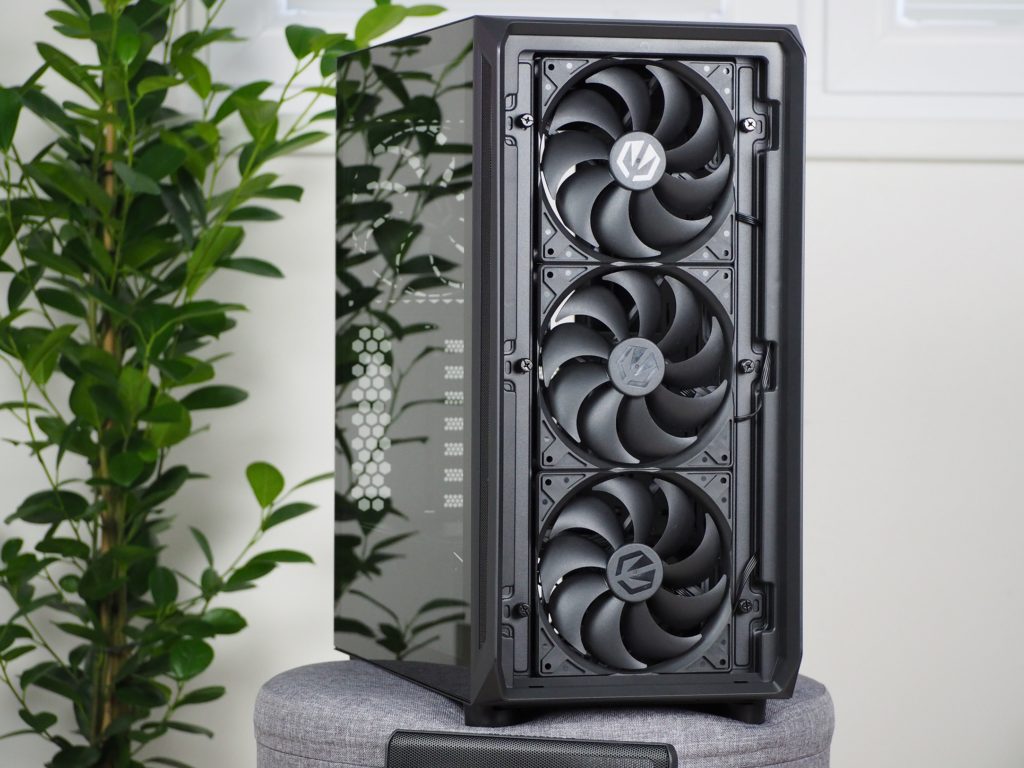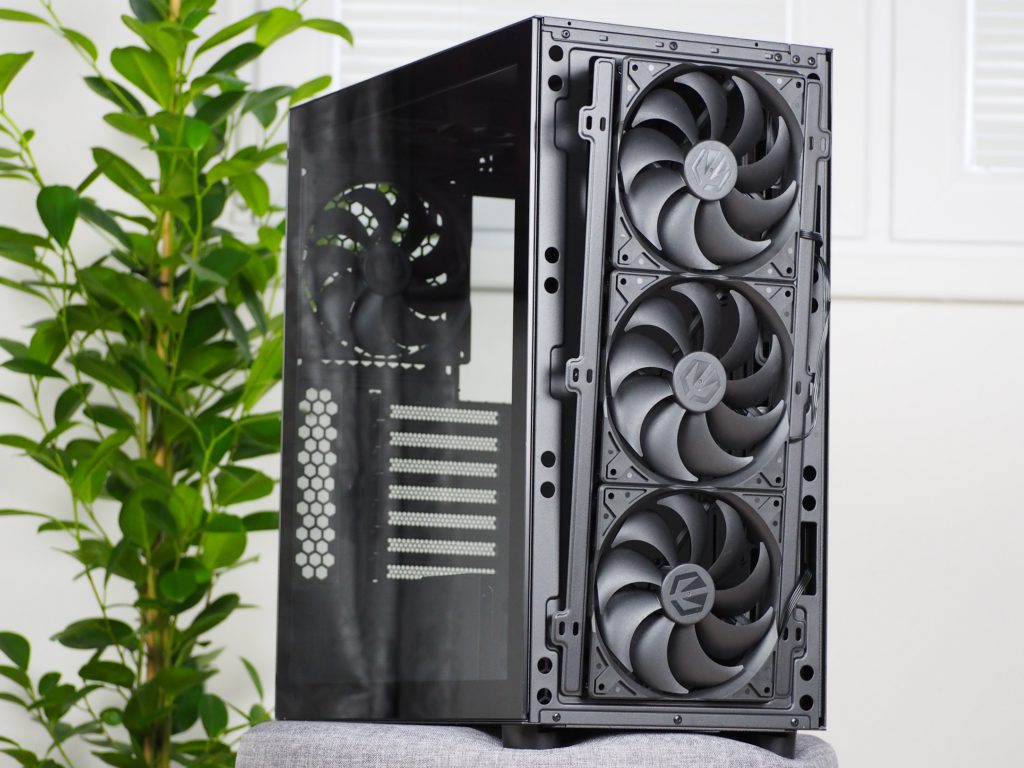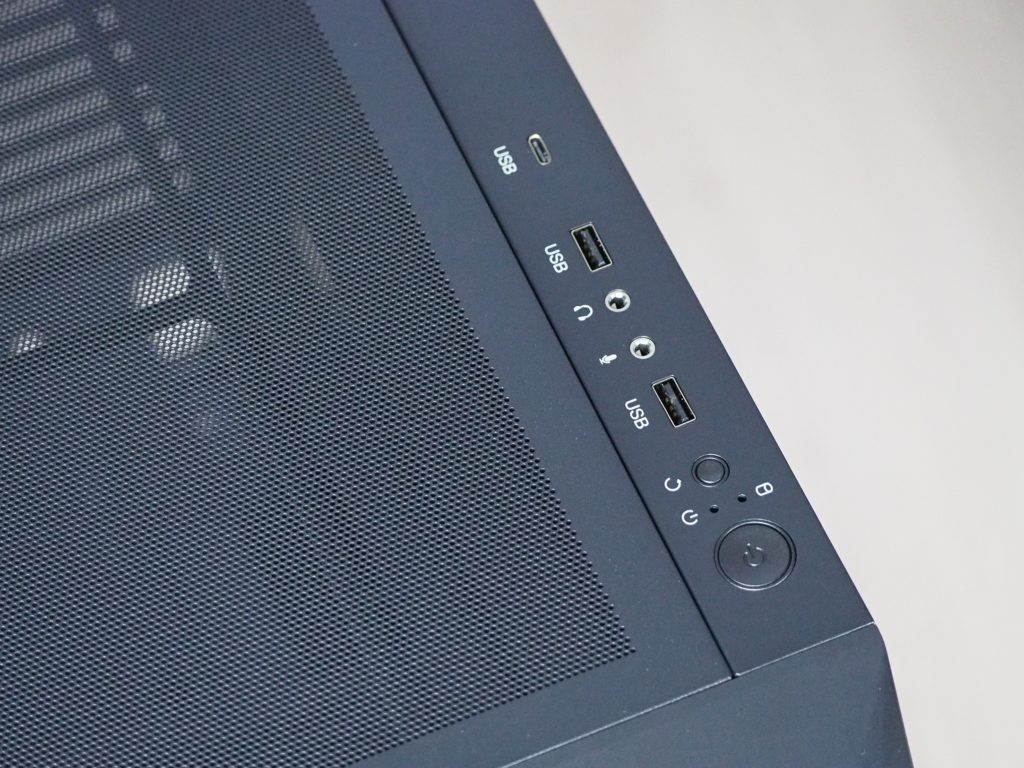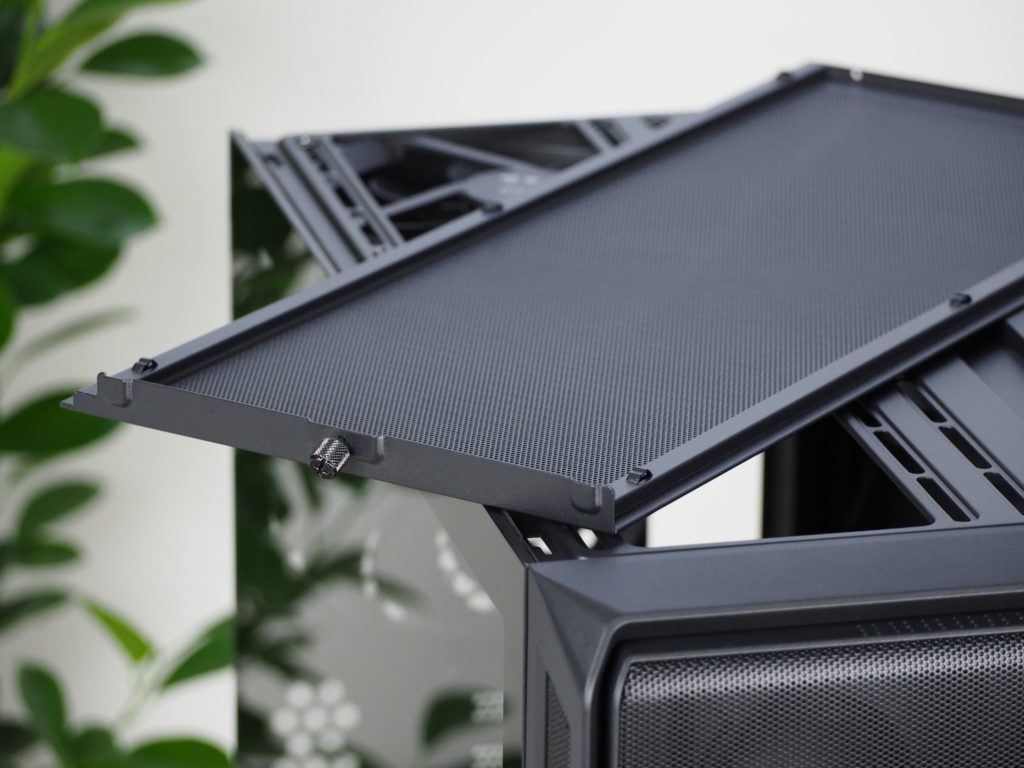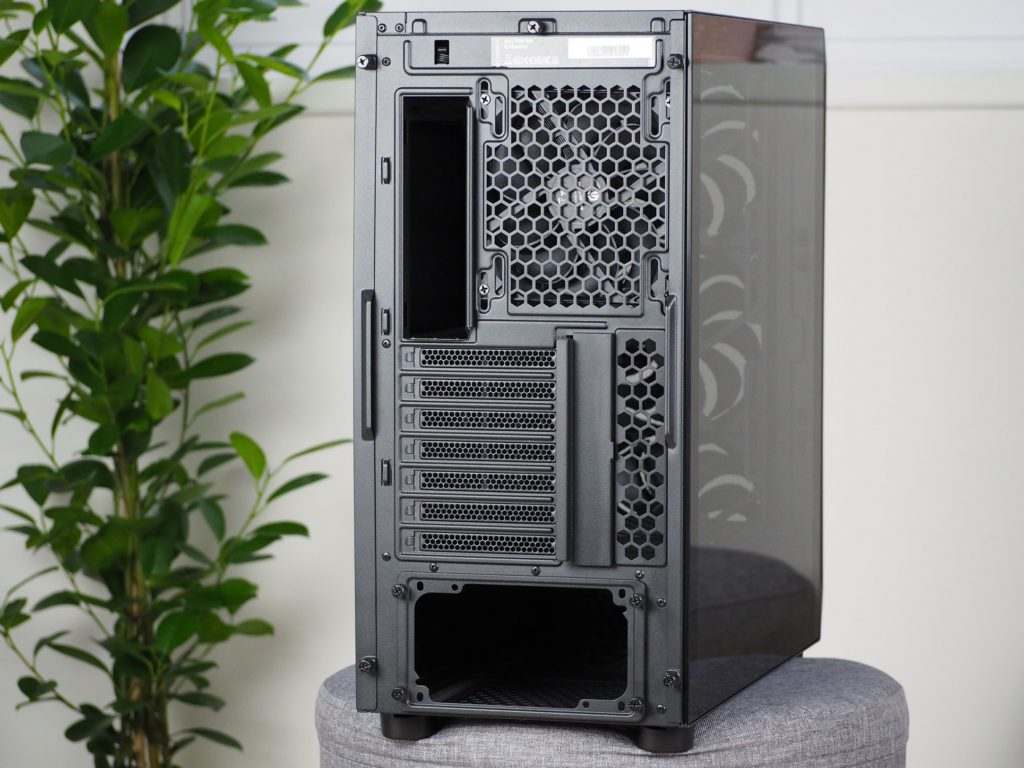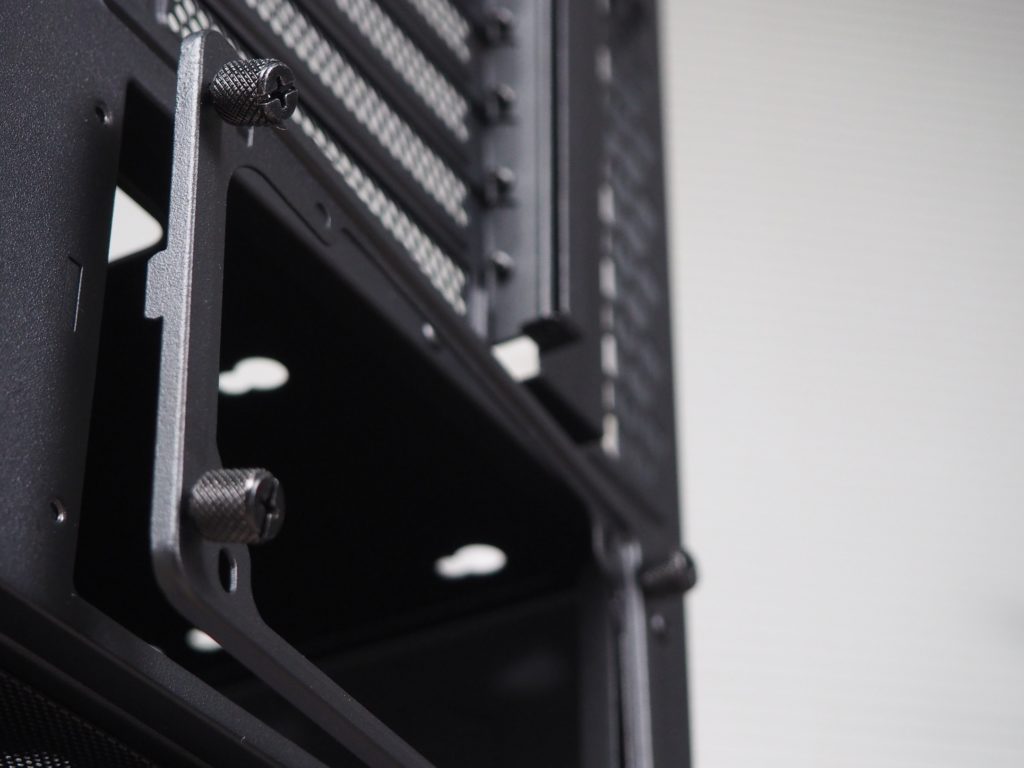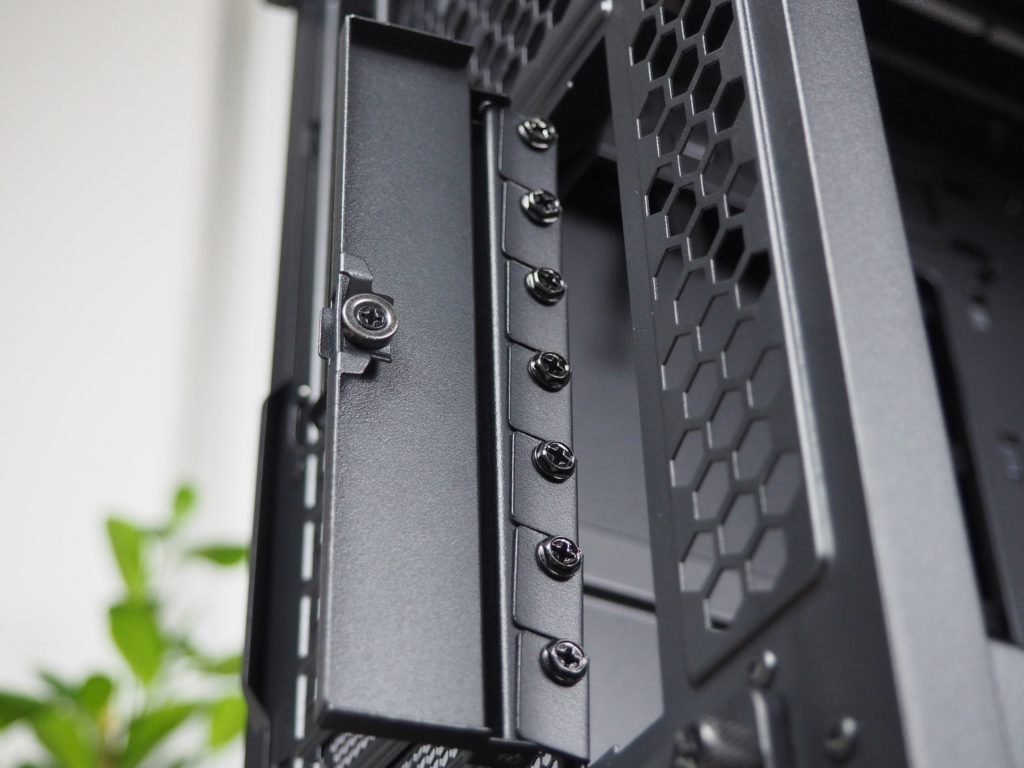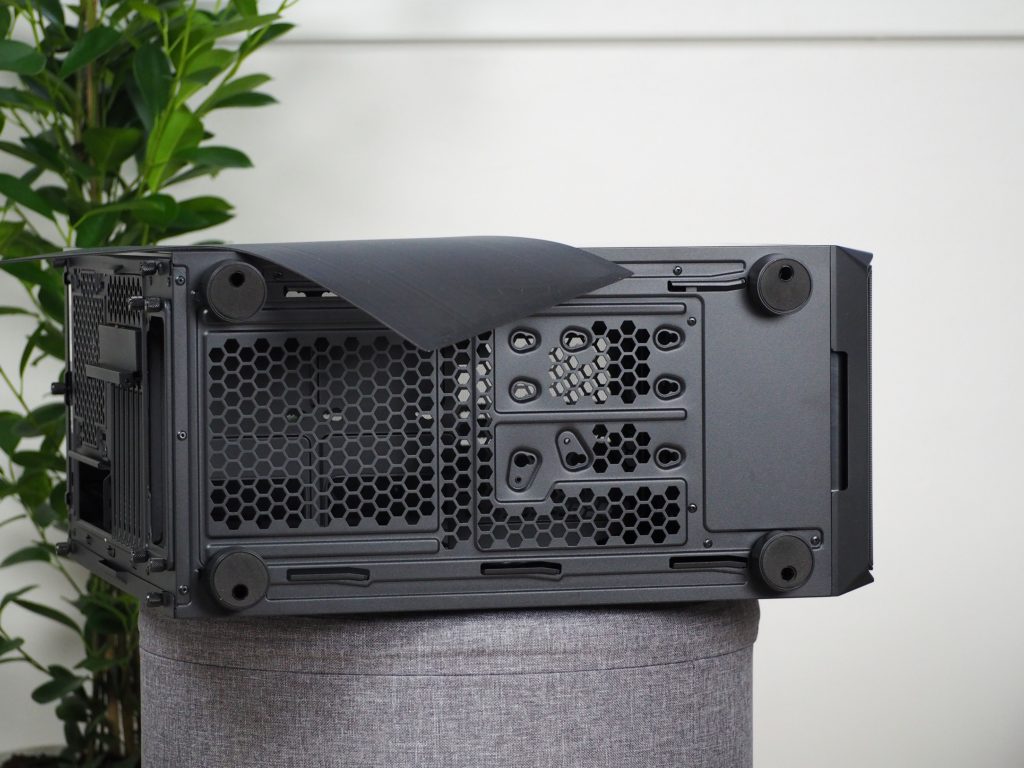Exterior
The all-new Arx case range has just made its debut. The first model, the 700 Air, is also the largest case from Endorfy. This case is equipped with up to five 140mm fans, which in combination with the ventilated front panel create a great potential for really powerful or very efficient (i.e. at lower rpm per unit of airflow also super quiet) system cooling. This then naturally has a positive effect on the results.
Basic parameters
| Parameters | Endorfy |
| Arx 700 Air | |
| Parametre | |
| Supported motherboard formats | Mini-ITX, mATX, ATX |
| Supported PSU format | ATX |
| CPU cooler | up to 179 mm |
| Graphics cards | up to 410 mm |
| Fan | 8× 120 mm/6× 140 mm (5× pre-installed) |
| Supported liquid radiators | 2× do 280/360 mm |
| 2,5" positions | 6 + 1 shared |
| 3,5" positions | 1 shared |
| 5,25" positions | 0 |
| Dimensions [H/D/W] (and volume) | 486× 472 × 228 mm (52 l) |
| Weight | 8,7 kg |
| Materials | steel + plastic + tempered glass |
| Connectivity | 2× USB 3.2 gen. 1 + 1× USB 3.2 gen. 2 type C + 2× 3,5mm Jack |
| MSRP | 109 EUR |
Exterior
In addition to the securely packed case, in a cardboard box you will also receive the necessary essential accessories. This means various screws, rubber washers for mounting storage devices, single-use zip ties and an illustrated manual.
At first glance, the case is already larger than the Regnum series. The new product looks very decent, without any eccentricities in appearance. The left side panel is largely made of tempered glass with a thickness of four millimetres. The black frames around the glass are a bit thicker but proportionate to the dimensions of the case. It is even the first (from Endorfy) not to use screws in the corners to hold the glass side panel. There are holes in the front of the design that it slides into. It is then simply secured at the back with two screws.
For me, the big plus is that double-threaded screws are used on both side panels. Even after you unscrew them, the side panels are still secured and so you don’t have to worry about additional screws.
The front panel consists of two parts. The front part is easily removable thanks to the magnets on its back side. It can thus be efficiently removed, cleaned and put back on. Since there is no fine nylon filter in the front, its main task is to replace it. Unfortunately, the holes are 1.5 millimeters in size, so effective protection against small dust is out of the question. In use, the front panel caught dirt and I had to clean it, but the smaller ones came through, which was already visible on the fans after three weeks of use.
The second part is the frame, which holds the dust filter in place and also separates it slightly from the fans themselves. The ones the manufacturer has fitted here are three of its latest, the Stratus 140 PWM. Their estimated lifetime by the manufacturer is 80,000 hours. Separately purchased fans also come with a five-year warranty. This indicates that Endorfy trusts the fans quality-wise. Unfortunately the case only comes with a three-year warranty, even including the fans. They are mounted on side frames that hold all the fans directly on top of each other. This makes it much easier to handle, even if you already have all the hardware inside. You remove the fan frames by loosening six screws. If you would like to replace the fans with a smaller format, the frames would have to be placed in a secondary position – closer together. The disadvantage I see is that you can’t combine 120 with 140mm fans because of this.
Of course, you can also fit a liquid radiator up to 280/360 mm. By rotating the frames, you get six millimetres of extra space inside, for example for a thicker radiator or a longer graphics card.
The top I/O panel is unconventionally positioned along the right side, which can reduce access to connectors in smaller spaces. The case’s connectivity doesn’t stand out from the crowd, but with three USB connectors it can cover most user needs. Especially when one of them is also type-C. For wired headphones you have two 3.5mm jacks, separate for headphones and microphone. The restart button is smaller and recessed a bit more into the structure. Because of this, it’s harder to press, but it’s a precaution against unwanted pressing. The power button is a lot nicer to press. It will even give you a tactile response. Between the two buttons are two status LEDs. One illuminates on power up and the other detects disc activity.
The case has been given a piece of solid sheet metal with perforations on the rest of the top to better dissipate waste heat. Thanks to the screw and latches, it holds to the structure as if welded. I personally like this method of perforation better than a regular magnet filter, which doesn’t even always have to line up with the rest of the top. An advantage over the ordinary bendable filter is also the possibility to fit the fans with anti-vibration mounts. For example, the Silent Wings 3 fans from Be Quiet! have a bulging header, which can displace the fragile magnet filter. One 140 mm Stratus 140 PWM oriented to exhaust air from the case is also mounted here on the ceiling. One more fan in this size format or three 120 mm fans will fit to it. Or you can use this area to mount a radiator for a liquid cooler in the 280/360 mm format.
In addition to the five screws of the side panels and top filter, there are four more from the power supply bracket on the back of the case. This reveals the position of the power supply as well as how it is mounted through the back of the case. Above it are seven covers for PCI Express expansion cards. All seven screws in this position are neatly enclosed by another cap. It is hinge mounted and combined with a magnet instead of a screw gives you a quick option to manipulate the screws.
Thanks to more width, another Stratus 140 PWM fan is mounted on top here. Of course, the possibility of fitting a smaller, 120 mm fan has not been forgotten either. The top part is complemented by a hole for the motherboard I/O panel as is standard.
Four feet with soft pads hold the case 22 mm above the ground. But you have to take into account that they do not have a non-slip surface. The dust filter extends from the back to the front feet, along the entire perforation. Unfortunately, even here a fine nylon filter is missing. The perforations on the filter are smaller compared to the front though. Size-wise, they are one millimeter.
- Contents
- Exterior
- Interior
- Test methodology
- CPU and GPU cooling tests
- Motherboard cooling tests
- SSD cooling tests and under-ceiling temperature
- Conclusion





